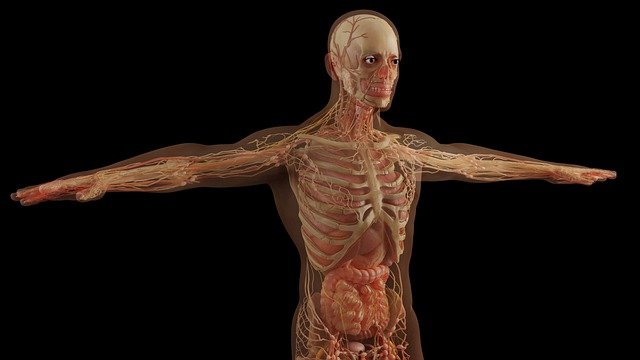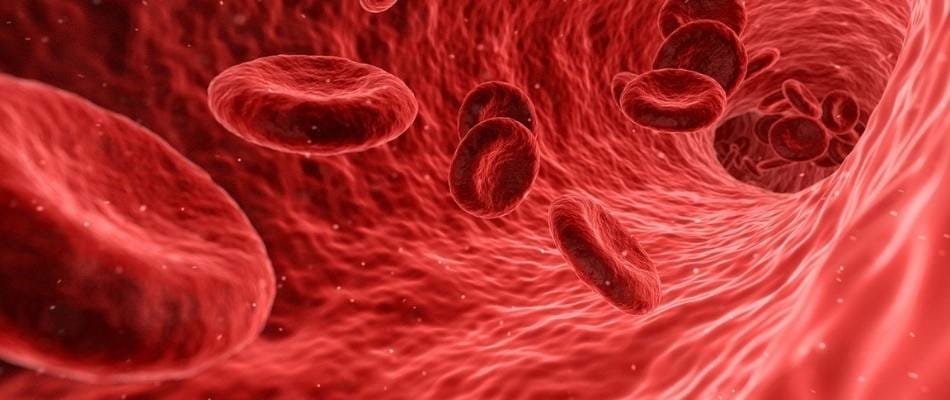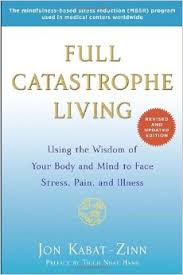In the years that I have been practicing and teaching qigong I have seen a shift in the types of people that are interested in qigong. Qigong’s largest attraction has always been from people who are ill or have poor health and have not had much luck solving their issues the conventional ways. Most of these people want to reduce something such as stress, blood pressure, weight, or reliance on medications. Or, they are trying to increase something such as energy, response to chemo, flexibility, balance, strength, or bone density. Despite the variety of goals, these individuals want to know how qigong works so that they can help themselves or loved ones.
Qigong works by promoting healing through relaxation techniques, deep breathing, and awareness to direct energy (qi) to areas of deficiency in the body. Contrary to western approaches that focus on the illness, qigong works to raise the level of health and energy of the entire system so that the body can direct surplus resources to where they are needed.
Now, I am meeting a new crop of individuals interested in qigong. It’s people who have made great strides in their health, fitness, nutrition, and have learned that qigong can improve mental capacities. It’s people who have invested time in tai chi, yoga, or meditation but have not yet experienced the build up and movement of energy in their body. These new groups share a desire to take their interests to a higher level or their internal and spiritual life to a deeper level.
Simply put, qigong practice has the ability to improve one’s state. It doesn’t matter where you are starting from or how you define “better.” The thing I love most about qigong is that you don’t always need to know what to do or know what is wrong (even when the doctors don’t). The body has a higher intrinsic knowledge of how to use the energy you are providing it (sleep, nutrition, and now qigong) and where it is needed most.
Here is the rough process for how how qigong works and then we will get into detail below:
- We know we want to feel better or want some sort of change
- We increase and improve the energy (resources) in our body through qigong breathing, instruction, and movements
- When our body’s basic needs are met, extra energy can be directed towards improvements or repair
- The body makes this decision based on what the greatest need is for the whole system

How Does Qigong Work?
Let’s start by talking about the basics of how qigong healing really works and then dive a bit deeper into medical studies that are underway to back up the results you have heard about or may be experiencing. Here is a great quote by Dr. Gayl Hubatch, in Fabric of the Soul, sums up the process of qi gong development nicely.
“Coordinating breath, intention, and movement increases energy flow. Increased energy flow is healing and restorative.” Eloquent and simple. We engage in tangible, understandable activities (moving, breathing, intention) and reap health benefits.
There are literally thousands of qigong sets. What they all have in common is that they are a series of large and small movements that are coordinated with breathing. The movements twist and stretch, relax the nervous system, and warm up the body, all with the intention of encouraging energy in the body to build up and flow.
Qigong accomplishes this based on the principle that energy follows intention. Through our breath and concentration we are brought to a level of awareness that we use to purposefully move energy in the body. Qigong movements are large and small, relaxed and flexing, fast and slow. This is all intentional to create a clear path and to raise your immediate awareness and concentration.
I know this starts to bring to mind doubts that this is possible. We’ve devoted an entire essay and video describing what qigong is in depth but here we want to continue our conversation on how does qigong work and promote healing. Let me give you two concrete examples to show you that these processes are already taking place in the body.
- Your body directs energy to areas of need: When you have the flu, much of the fatigue, muscle aches, inability to move, and foggy thinking is your body shutting down unneeded processes so that it can direct your energy to the immune response to combat the flu. Production of phlegm, water to cleanse the system through vomiting and diarrhea… Not pretty but an elegant design meant to get you healthy again. When the threat has been neutralized, energy is returned to your brain and body to begin moving and thinking clearly again.
- You can direct intention to an area of your body: When you hit your shin you look down to focus on it and rub it bringing blood flow and energy to the area, right? In that moment, the pain has all your attention but it is energy that you are controlling to reduce it. Try this: close your eyes and relax for four deep belly breaths. With your palms resting on your thighs, put all your intention into your palms and “imagine” you are inhaling in through your palms. Do you feel the warmth or pressure? That is how qigong interacts with your body’s energy field.
Here is what makes qigong development difficult:
- It is normally a far cry from any medical advice we have ever received.
- While the activities are easy and enjoyable, developing sensitivity to identify what is going on internally takes a while. Without knowledge of how qigong works it is easy to abandon because “you don’t feel like you are doing anything.”
- It is esoteric. Let’s be blunt. We are talking about moving “energy” around a body we feel pretty familiar with. This is not something I did during high school PE.
How does qigong work with enough western perspective so that I buy-in and keep practicing?
The tissues and fluids of the body are made up of minerals and chemicals with magnetic properties. The earth is a magnetic field and food and air also serve as energy. We can perform activities to alter blood flow and temperature which interacts (matches) the earth’s properties. These properties are closely aligned with what we conceive of as healthy.
Practitioners of tai chi are normally pretty open to anything. They hear of qigong and want to feel what is described and begin by being quite hopeful. With an understanding of the full developmental progress we can stop doubt from creeping in.
Developing the Energy of Qigong
When I began learning qigong I wish that I had a spectrum of development to judge where I was and where I was going. Being honest, I quit practicing at times because I got to a place where I thought I wasn’t getting anything out of it when I was actually at a plateau. Luckily I attended a workshop or read a book, realized where I was and got back up and running again. Let’s use the metaphor of baking a cake to describe progression.
Stages of Qigong Development
| Baking a Cake | Qigong Development |
|---|---|
| Turning the oven on | A practitioner is brand new. Their interest is piqued and they are just learning to relax into a meditative stance. |
| The oven is heating up | Progress at relaxation allows the energy to move around the body correctly. |
| All the ingredients have been found | They are interested to new terms like dantian and are actively trying to use them. |
| The ingredients get mixed | They can think about their center when meditating and have an understanding of keeping their hip joints, arm pits, lower back soft. |
| The oven beeps and is hot enough | A different sort of warmth, from the inside exists after practice. It is general and fleeting. |
| The ingredients are one big blob and enter the oven | The body moves collectively or in order from the center out. |
| A quick initial rise happens | Intention on the hands or dantian yields a perceivable heat that goes away. |
| A long time passes and the cake browns | We work to try to make this feeling come back and it does at times. Our overall relaxation and higher body temperature come quicker. |
| We check it with toothpicks and send it back in for more time | We can warm our hands and loosen our center easily. |
| Time for frosting | We can create and feel energy and can bring it to one spot within the body if we concentrate on the spot. |
| Time for decoration | We can move the energy in specific directions, alight on a space and move on to another. |
I hope this playful explanation hints at the huge amount of foundational work that you are benefiting from when you “don’t feel anything.” We are talking about interacting with autonomic processes and being able to affect your health, literally, from the inside. Of course this process shouldn’t be quick or easy because we want healing to be permanent and this requires growth over time. But that doesn’t mean it has to be complex. Most people learn about qigong and are trying to improve their health or get past an ailment. Know that the journey can continue to having superior health so that you don’t get sick often if ever. Let’s next unpack just how does qigong heal.

Qigong Healing – Can cultural beliefs stop your healing?
There is so much debate about the potential for qigong healing the body. I for one believe that qigong can heal the body and personally benefit from my practice. I also think that while the word “healing’ in a western context is reserved for describing coming back from an infirmity or injury, the old-German origin of the word meant ‘restore to sound health.” This is a better description of how qigong healing really works. It is a restoration of the entire system so that sickness doesn’t exist. It is also a reclaiming of health you may not have experienced since your youth.
Aside from sharing my personal experience, there is a large enough body of medical evidence showing how qigong does heal. For most, this is enough to sway non-believers or people who have not yet had positive results with qigong to stick with it. However, there is an additional barrier for many Westerners to understand qigong because our cultural beliefs make the idea of qigong completely improbable.
| Believers | Nay-sayers |
|---|---|
| Believers share their successes which are typically powerful narratives about overcoming an affliction with some dedicated qigong healing practice. However, each instance is typically an isolated case that cannot easily be replicated. Furthermore, if someone suffers from a true affliction such as back pain, hearing that someone alleviated their symptoms without drugs or surgery is very attractive. This is even more critical when someone has tried all the traditional western options. | Nay-sayers consider the healing to be coincidence or too inferior a solution when compared to a western approach. For every person who has benefited from qigong healing their body, there are many more who are unsuccessful. At best, qigong may be a weak alternative or an addition to care but not a cure. From a purely debate standpoint, the nay-sayers hold a naturally stronger position because they do not have to produce the burden of proof. They simply highlight their own lack of success or case-studies that have not been systematically proven true. |
What I can do is share how my cultural beliefs (and maybe yours) didn’t let me accept the potential for qigong healing. There will always be a seed of doubt until the first change is felt. Knowing that healing is possible has to be the very first step. Let’s unpack this a bit.
What is Qigong Healing?
Metaphysical and esoteric arguments only make this explanation harder so let’s set that aside for today. At its essence, qigong healing is:
- Getting the body and mind into a relaxed healing state typically through breathing, gentle movement, and mental effort to quiet the mind or make our thoughts positive.
- Using the mind to heal. There are two basic modalities which are used separately or together depending on the qigong set.
| Specific | Global |
|---|---|
| Directing the mind to an injured area and using the forced concentration to heal. | Improving and increasing the energy of the entire body so that it “overflows” into the area of need. |
Without a systematic way to validate qigong’s healing powers, how do we get to a place of hope and potential?
The body is the proof for how qigong can heal.
Let’s undertake a thought experiment. Answer YES, NO, or MAYBE to the following questions. Choose whatever comes immediately to mind:
- Can a person be so afraid that they are unable to move?
- Can an activity, such as public speaking, cause a person to be so uncomfortable that they become physically ill and can’t do it?
- Can grief over the loss of a loved one make a person unable to get out of bed?
- Can reliving a fight you had in your mind cause your heart to race and cause you to sweat?
- Can directing energy into a body part with your mind cause it to heal?
If you are like most people, you answered YES to the first 5 questions and NO or MAYBE to the last one. So here is a question for you:
Why are we so willing to accept that the mind can cause pain and sickness in the body yet we struggle to believe that the mind can also heal it?
Our Culture Determines Whether or Not We Believe that Qigong Healing Works
Growing up in the United States I simply didn’t have a metaphor or belief system that would accept the mind’s ability to cause positive change in the body. Plenty of negative ones. The closest thing for us is a religious explanation or spontaneous regression.
Every day our negative thoughts and emotions trigger physiological responses. This is a natural human process. Survival depends on us being acutely aware of what can harm us so don’t beat yourself up over it. Just know that you can actively engage the same system though for positive benefit.
Does qigong healing really work? Western studies make the point.
The truth is that even Western medicine has accepted the healing outcomes of qigong and have moved past the question: “Does qigong healing really work?” Instead research has shifted to figure out how does qigong work and why it works. There was a pretty savvy NIH study that was conducted in the U.S. which summarized the available studies on tai chi and qigong healing and put the results together in a nice chart. Check out the study for the full picture because it is extensive but I will summarize the collective data here:
13 Medically Proven Benefits of Qigong
Hundreds of western medical studies are catching up on the thousands of years of qigong benefits being reported by Traditional Chinese Medicine. Many studies include qigong alone versus other modalities. Most of the studies pair a western approach (e.g., chemotherapy) with qigong versus the western approach being used in isolation. Thorough medical studies have shown that the benefits of qigong include:
- Cardiopulmonary Improvements
- Strengthening in Bones
- Reduced Falls
- Improved Balance
- (Patient Reported) Reductions in Pain
- Bone Density Improvements
- Improved Flexibility
- Reduced Depression (Improved measures on depression scale)
- Measurements of Anxiety and Stress Reduction
- Weight loss maintenance
- General Heath Improvements (Sickness Impact Profile)
- Arthritis Improvements (Self-Efficacy Scale)
- Improvements with Fibromyalgia (Fibromyalgia Impact Questionnaire)
I wonder if the “lack of evidence” surrounding the benefits of qigong at this point is simply due to the fact that Asian cultures don’t need it. They may inherently believe that it works and have moved on to study which qigong set best fits each ailment.
More large-scale studies do exist and are underway but I don’t even know that more are needed. Major western money has already been pumped into studying how the mind can heal the body and it has all been verified. They just call it mindfulness. Jon Kabot-Zinn’s work is a must if you are wanting a more western perspective.
For a fast way to start experiencing the benefits of qigong for yourself we wrote about the best ways to learn qigong on your own.



